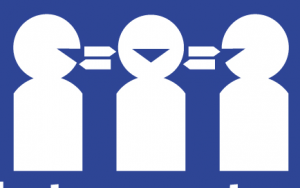Greetings AEA365! My name is Miki Tsukamoto and I am a Senior Monitoring and Evaluation Officer at the Planning and Evaluation Department in the International Federation of Red Cross and Red Crescent Societies (IFRC).
What if you had an opportunity to add a human face to baseline surveys and reflect numbers in a more appealing way?
In a joint initiative with the Uganda Red Cross Society (URCS) and the Swedish Red Cross, I recently had such an opportunity. We piloted video as a tool to complement a baseline survey which had been carried out for URCS’s community resilience programme. The video aimed to capture stories from communities according to selected objectives/indicators of the programme, with the idea that in three-years’ time this tool could then be used again to measure and demonstrate change or highlight gaps in programming.
Lessons Learned: Baseline data is important for planning, monitoring and evaluating a project’s performance. In many organizations, the end product of such a survey can sometimes result in a report filled with numbers; which, although useful for some purposes, is not always understood by all stakeholders, including some of the communities we aim to assist. Taking this into consideration, video seemed to be an ideal medium for what the IFRC needed since it:
- Offers visual imagery and can transcend language barriers if needed;
- Allows community(ies) with an opportunity to participate and directly express their views during the interviews; and
- Provides a more appealing way to capture and report on the baseline.
Here are 3 lessons that I took away from this experience:
 Gatekeepers: It is important to identify your gatekeeper(s), since this will be necessary for meeting community members on the ground, and in obtaining their permission to film and in accepting the presence of the film crew in the community(ies) and in the randomly selected individual households.
Gatekeepers: It is important to identify your gatekeeper(s), since this will be necessary for meeting community members on the ground, and in obtaining their permission to film and in accepting the presence of the film crew in the community(ies) and in the randomly selected individual households.
 Independent Interpreter: If interpretation is necessary, an independent interpreter is key since s/he serves as the voice of the interviewee, as well as the interviewer. S/He has an important role in reducing bias and providing a comfortable environment for an honest dialogue during the interview process.
Independent Interpreter: If interpretation is necessary, an independent interpreter is key since s/he serves as the voice of the interviewee, as well as the interviewer. S/He has an important role in reducing bias and providing a comfortable environment for an honest dialogue during the interview process.
 Community buy-in: The filming process and the community’s better understanding of the aims of the video project, can help build a stronger buy in from the community(ies) for your programme overall.
Community buy-in: The filming process and the community’s better understanding of the aims of the video project, can help build a stronger buy in from the community(ies) for your programme overall.
Rad Resources: We have two version of the baseline video (if you are reading this via email that does not support embedded video, please click through back to the online post):
Short Version:
Long Version:
Hot Tip: For those interested in innovations in the field of humanitarian technology and its practical impact Humanitarian Technology: Science, Systems and Global Impact 2014 conference is coming up soon in Boston, MA from 13 to 15 May 2014.
Rad Resources:
Do you have questions, concerns, kudos, or content to extend this aea365 contribution? Please add them in the comments section for this post on the aea365 webpage so that we may enrich our community of practice. Would you like to submit an aea365 Tip? Please send a note of interest to aea365@eval.org. aea365 is sponsored by the American Evaluation Association and provides a Tip-a-Day by and for evaluators.

Awesome way of using video as a tool to capture baseline surveys. I might use this in a future. Thank you for the gatekeepers, independent interpreter and community buy in advice also.
Awesome way of using video as a tool to capture baseline surveys. I might use this in a future. Thank you for the gatekeepers, independent interpreter and community buy in advice also.
The experience from Rapid Response training in the U.S. Army led my interest in the assistance of natural disasters. We conducted regular training to remain on alert for the U.S. Ny unit was responsible to react with rapid deployments to anywhere in the U.S. and territories. We spent our efforts sustaining the compounds for all support needs. It’s remarkable how the humanity can benefit from a call of duty.
My name is Christian Ortiz. I’m a student at Texas A & M University-Central Texas. Your idea to use video recordings to facilitate in evaluation of your program efforts is amazing. Not on do you get the before and after, you get to see the non-verbal communication by the subjects. You get to see first hand, almost like being there, the subjects true response. Your evaluation won’t be off target or coated to a certain liking. Your idea is very simple but is super effective. I’m going to remember to use video, if possible, in my future projects. Thank you for sharing.
Hello Miki my name is Elisa Chamberlain and I am currently an undergraduate at Texas A&M University-Central Texas. I found your article to be eye opening as I was intrigued by the work the IFRC has put forth. From my perspective, baseline data, can enable the necessary changes to occur within a program for a community. In this case, the unbias interpreter is vital in effective communication for all parties involved. I am not studying humanity but this article has peaked my interest for the new data in 2017. Lots of great and valuable information. Thank you!
In my Research Methods class interviewing is considered a good method of exploratory investigation. Doing video interviews before and after a program has been run would certainly seem to be a good way to begin the evaluation of said program. Getting the hard numbers is important, yet the interview provides the qualitative data I believe is as important as hard numbers so as to round out a useful evaluation of any program that directly affects people and their behavior and circumstances.
You are also correct on the three important areas necessary to getting good data about populations; gatekeepers, interpreters, and community buy in.
Good evening, everyone! My name is Tiffany Sockwell, and I am a student at Texas A&M University – Central Texas studying to earn my Master of Science in Human Resource Management. I am currently enrolled in my university’s Introduction to Program Evaluation for personal interest. I really like the use of the video to help assist with capturing data gained from baseline surveys. In my opinion, it appears as if those who would benefit most from the survey had a stake in the outcome. I also believe that this is an excellent way of conveying your message. I am new to program evaluation, so producing a video to support the research wouldn’t have crossed my mind. Thank you for sharing.
Pingback: Using video for evaluation baseline | intelligent measurement
Hi Tom,
The company that shot this video for the IFRC is called Small Tree Productions. You can contact Anna Dobai for further information (anna@annadobai.net or amdobai@gmail.com)
Best,
Miki
Thank you!
I would like to find out about having similar videos done for staged evaluations. Who can I contact about this, or what company shot the videos?